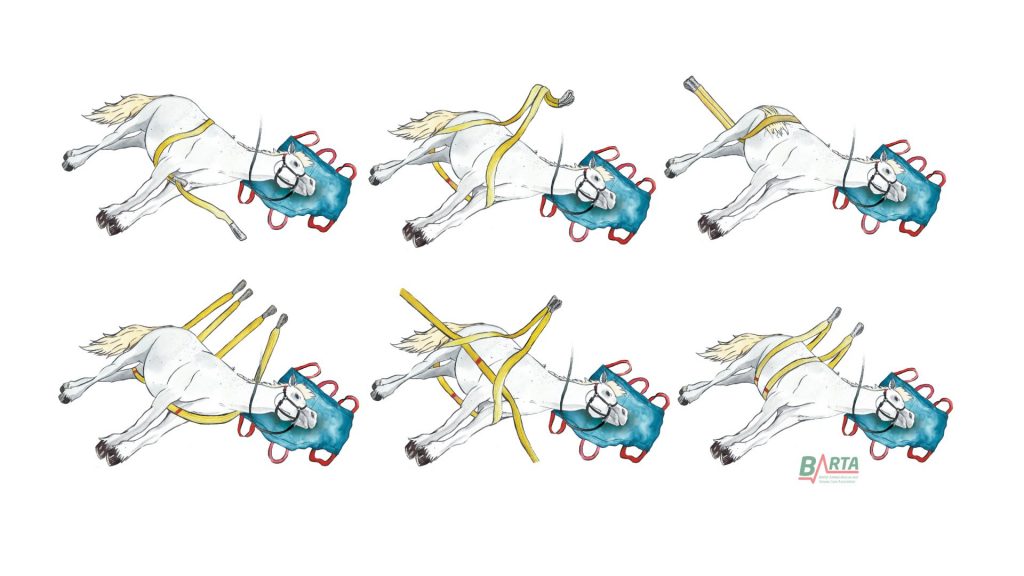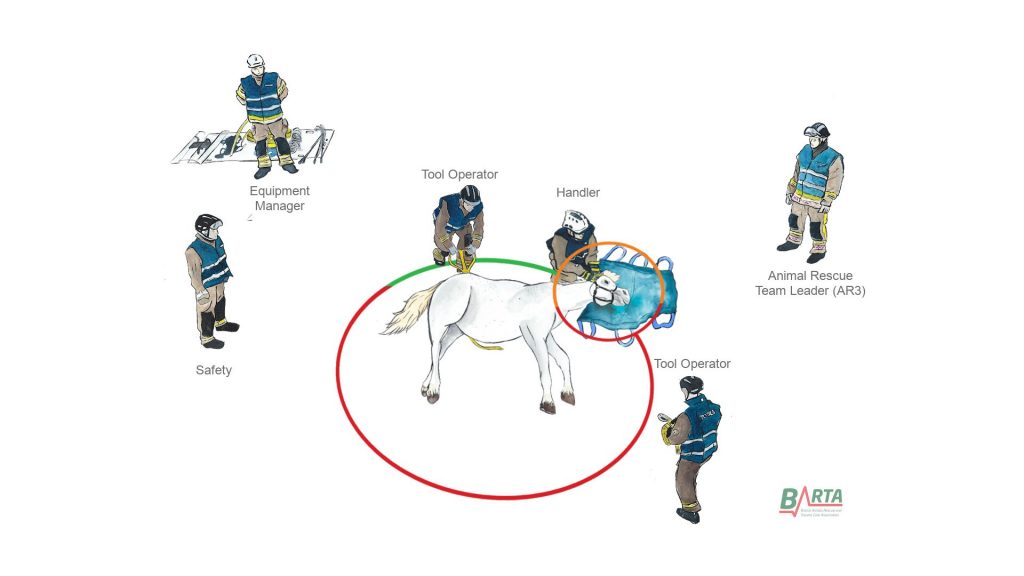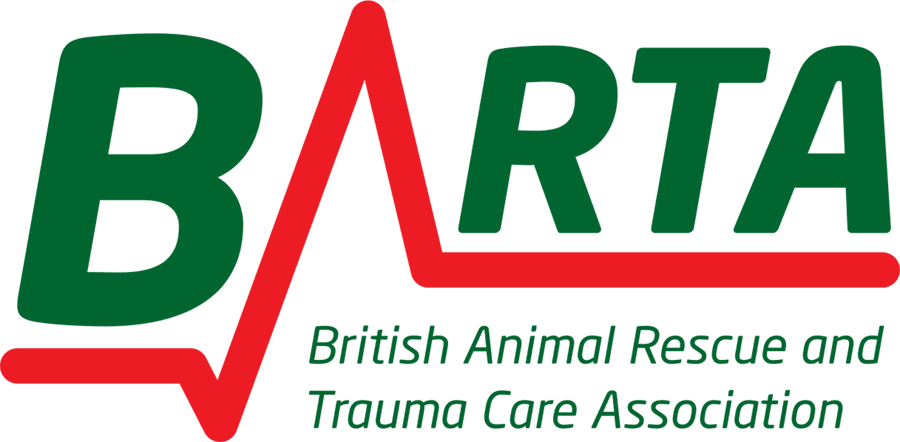Standard Manual Stropping Techniques
© BARTA 2023
Intermediate Level
The information contained in this section is designed to support trained rescue responders by providing a reference to the UK standard agreed techniques for manual movement of large animals. It also provides an awareness for those who may encounter large animal incidents as part of their professional role.
This is not designed to replace formal practical training.

The majority of large animal rescues are undertaken using one or a combination of manual techniques, often in conjunction with a rescue glide.
In some circumstances, following assessment and wider understanding or situational awareness, the use of powered mechanical advantage or lifting may be the preferred option.
When choosing a method in conjunction with the team leader, the following should be considered;
- Is the proposed method an agreed technique and appropriate for the species involved?
- Are there circumstances which require adaptation of an agreed method?
- Is there appropriate veterinary triage, assessment and supervision available on scene?
- Are there any medical or welfare considerations that might preclude a chosen method?
- In the hierarchy of rescue techniques, can a simple low-tech solution be utilised?
- Will chemical control measures available be suitable and sufficient for the plan?
- Can the animal rescue lead be confident that the rescue method promotes a casualty centred and safe rescue where benefits outweigh risks?
Safer Working Areas
Trained animal rescue responders operate in structured teams with common methodology. A risk based approach must be applied to each situation and protocols observed which include strict adherence to the safety zones below.
Where operating in high risk areas is necessitated, the role of the vet will be to deliver control measures commensurate with the risk and operational plan.

Gaining Head Control
Using a Strop Guide and Limb Crook
Standard Manual Stropping Techniques
Barrel Skid
Barrel Skid Advantages:
- Used to manually ease a compromised standing animal where steep sides prevent a sideways skid and an element of lift is required, i.e. swimming pool edge, deep ditch
- Simple to apply
- Can be applied from single side if required
- Can be used with mechanical assistance and a rescue glide for combination lift and skid
Barrel Skid Disadvantages:
- If used without mechanical advantage, animal weight and centre of gravity in relation to the top of the obstruction edge must be considered.
- Once out, if continuing to skid with barrel configuration, expect an element of roll to the torso and potential for stimulation.
Rearwards Skid
Rearwards Skid Advantages:
- Simple to apply
- Can be used to manoeuvre animals through narrow gaps as the legs naturally fold forwards
- Fits securely around the torso
- Strops configured to avoid genitalia
- Avoids using legs, tail and head for traction
- Responders managing the head are walking behind the hazard which is a safer position than the forwards skid
Rearwards Skid Disadvantages:
- Pressure is concentrated around one area of the torso
Forwards Skid
Forwards Skid Advantages:
- Allows simple stropping configuration for when an animal presents front forwards
- Avoids traction on head or legs. Easy to apply to an animal in a restricted space
- Can be used for limited vertical movement
Forwards Skid Disadvantages:
- Places direct pressure around one area of the torso
- If not applied correctly may slip over narrow shoulders
- Uses a larks foot configuration so not truly quick release
- Responders on the head will be walking in front of the animal during the skid which might compromise them if they slip
Sideways Skid
Sideways Skid Advantages:
- Two points of contact minimises pressure on the torso, positioning of strops similar to carrying a human under their armpits
- Technique avoids the torso rolling and stimulating the animal
- Responders are in two lines which spreads the effort
- Communication is aided by having the team closer to the animal
- Manoeuvrability is extremely flexible and legs remain in perfect alignment not being pulled forwards or backwards
Sideways Skid Disadvantages:
- As with any skidding the ground conditions and distance are limiting factors.
Rollover
Rollover Advantages:
- Effective method of rolling an animal in order to stimulate it to rise
- Uses wide webbing on the muscle structure of the animal rather than using legs as levers
- Technique can be carried out on any size animal with minimal personnel
- All persons remain out of risk areas
Rollover Disadvantages:
- Should not be used in isolation if the rollover needs to be controlled
Controlled Rollover
Controlled Rollover Advantages:
- Effective method of rolling an animal carefully for positioning or veterinary consideration
- Uses wide webbing on the muscle structure of the animal rather than using legs as levers
- Technique can be carried out on any size animal
- All persons remain out of risk areas
Controlled Rollover Disadvantages:
- Requires sufficient personnel to achieve, dependant on the weight of the animal



